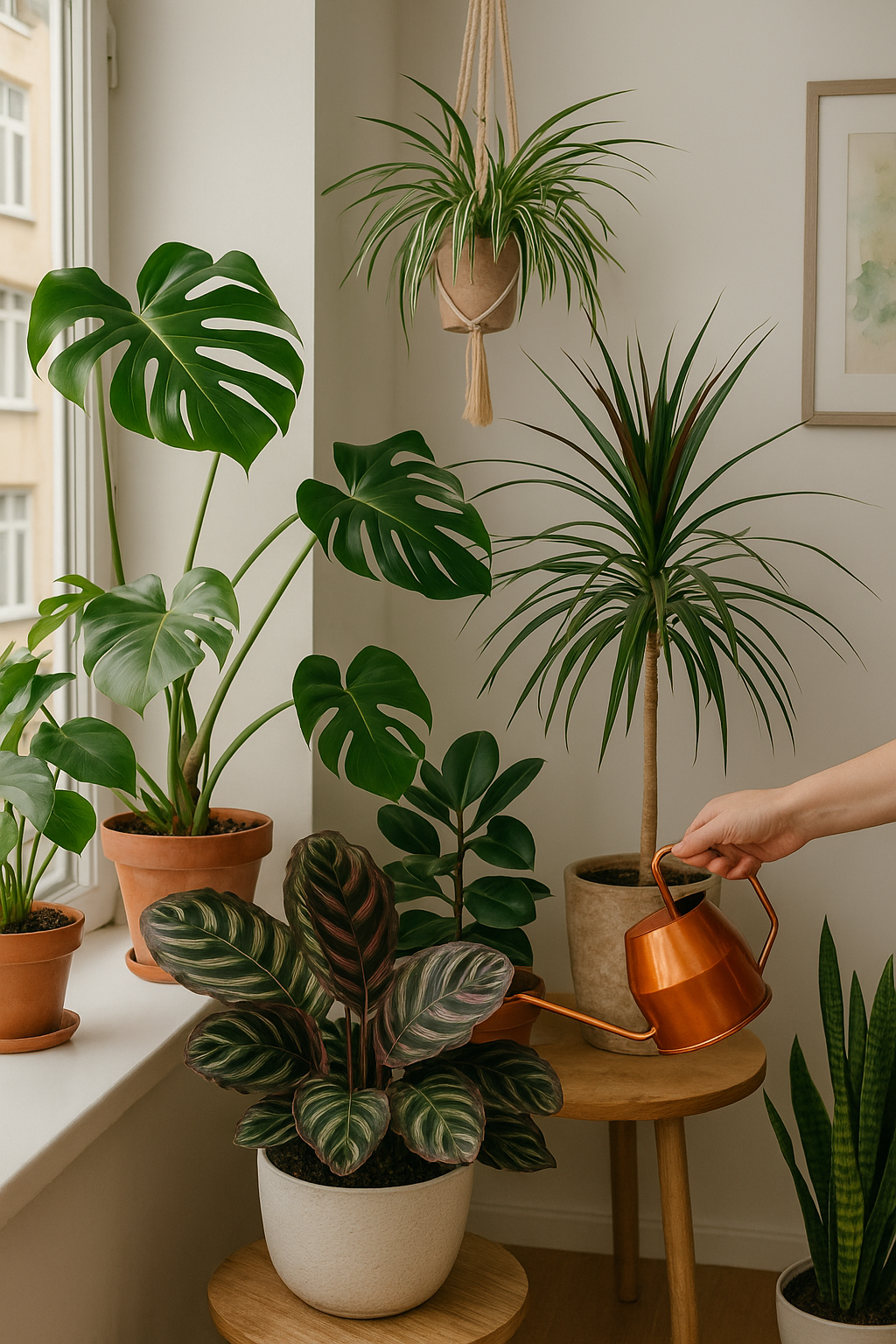Finding the ideal place for your plants in an apartment isn’t just about decoration—it’s about meeting the needs of the plants to help them thrive. Apartment environments vary drastically in terms of light, temperature, humidity, and airflow, all of which play key roles in plant health. By understanding how to evaluate your space and match it with the right type of plants, you’ll create a flourishing indoor jungle, no matter the size of your home.
Why Location Matters for Apartment Plants
Plants are living organisms with specific environmental needs. In the wild, each species grows in areas that offer it the ideal combination of light, moisture, air circulation, and temperature. Indoors, your plant’s health largely depends on how closely you can replicate those conditions.
A poorly placed plant might:
- Receive too much or too little light
- Dry out quickly or suffer from rot
- Be exposed to drafts or temperature extremes
- Experience stunted growth or leaf loss
That’s why placement is more than aesthetics—it’s about survival and vibrancy.
Understanding Natural Light in Apartments
One of the most important environmental factors for houseplants is light. Before placing any plant in your home, take time to evaluate how light behaves in each room.
Types of Natural Light
- Bright Direct Light: Found right next to south- or west-facing windows. Perfect for sun-loving plants like succulents, cacti, and some herbs.
- Bright Indirect Light: Light that’s filtered by curtains or that hits the floor or wall rather than the plant directly. Ideal for plants like pothos, peace lilies, and monsteras.
- Medium Light: Areas a few feet from a bright window, often in east-facing rooms. Great for dracaenas, zz plants, and some ferns.
- Low Light: Corners of rooms, hallways, or spaces with limited natural light. Best suited for snake plants, cast iron plants, or low-light-tolerant palms.
How to Check the Light
A simple way to evaluate natural light is with the shadow test:
- Sharp, defined shadow = bright light
- Soft-edged shadow = medium light
- No shadow = low light
You can also use a light meter app or a physical lux meter for more precision.
Best Spots to Place Apartment Plants
1. Window Sills and Frames
These areas provide direct sunlight—perfect for sun-hungry plants. Just be cautious of overheating during the summer and drafts during the winter.
Ideal plants: Succulents, aloe vera, jade plants, herbs like basil and rosemary.
2. Next to East or West Windows
These get softer morning or afternoon light and are suitable for a wide range of indoor plants.
Ideal plants: Pothos, peace lily, philodendron, calatheas.
3. Shelves and Ledges
Wall-mounted or standing shelves close to a light source can house plants that need bright indirect light. Be sure to rotate them regularly to ensure even growth.
Ideal plants: Ferns, peperomias, trailing ivy.
4. Hanging Planters
Ideal for trailing plants or when floor space is limited. Hang near windows for maximum light.
Ideal plants: Spider plants, string of pearls, wandering jew.
5. Bathrooms
While often low on light, bathrooms are high in humidity—ideal for moisture-loving plants.
Ideal plants: Boston ferns, peace lilies, orchids, bamboo.
6. Kitchens
Another humid area, often with moderate light. Be mindful of heat from appliances.
Ideal plants: Herbs, pothos, zz plants.
What to Avoid When Choosing Plant Spots
Air Conditioning and Heaters
Plants don’t like sudden temperature shifts. Avoid placing them near AC vents, radiators, or drafty windows.
High-Traffic Areas
Placing large plants in hallways or near doorways can lead to broken leaves or knocked-over pots.
Low Surfaces with Pets
If your pet is curious (or destructive), avoid placing toxic plants where they can nibble.
Overcrowded Corners
Plants need airflow. Avoid grouping too many together unless they love humidity and warmth.
Matching Plants to Your Space
Instead of forcing a plant into your preferred décor layout, match your design choices around your plant’s needs. Here are a few scenarios:
- North-Facing Apartment? Go for low-light champions like snake plants or cast iron plants.
- Limited Natural Light? Supplement with grow lights. Many options are designed to be aesthetically pleasing and energy-efficient.
- Love Hanging Plants But Have No Ceiling Hooks? Try standing plant ladders or shelves with room for trailing species.
- Pet Owner? Avoid pothos, dieffenbachia, and lilies. Opt for pet-safe options like spider plants or calatheas.
Enhancing Light Conditions
If your apartment doesn’t get enough natural light, don’t worry. There are ways to work around it:
- Mirrors: Reflect sunlight around the room.
- Sheer Curtains: Filter harsh sunlight into indirect light.
- Grow Lights: Use LED grow bulbs with full-spectrum light for photosynthesis.
- Light-colored walls: Reflect more light and brighten up a room.
Seasonal Considerations
Light levels and indoor conditions shift throughout the year:
- Winter: Less sunlight and drier air. Move plants closer to windows, reduce watering, and mist regularly.
- Summer: Intense sunlight might scorch leaves. Pull plants slightly back from windows and increase watering.
Keep an eye on how your plant responds. If you notice:
- Leaves yellowing = too little light or overwatering
- Leaf tips browning = dry air or underwatering
- Leggy stems = not enough light
Make gradual adjustments to help your plant recover.
Final Tips for Success
- Rotate your plants every 1–2 weeks for even growth.
- Use saucers or trays under pots to protect furniture.
- Clean leaves with a damp cloth monthly to remove dust.
- Watch for signs of stress, and adjust placement as needed.
- Group plants with similar needs together for easier care.
Conclusion: Let Light Lead the Way
When it comes to thriving indoor greenery, location is everything. A healthy, happy plant not only enhances the ambiance of your apartment but also contributes to better air quality, reduced stress, and an inviting home environment. By understanding how natural light works in your space and matching it with the right plants, you’ll enjoy a lush, vibrant apartment garden—whether you live in a studio or a high-rise.
